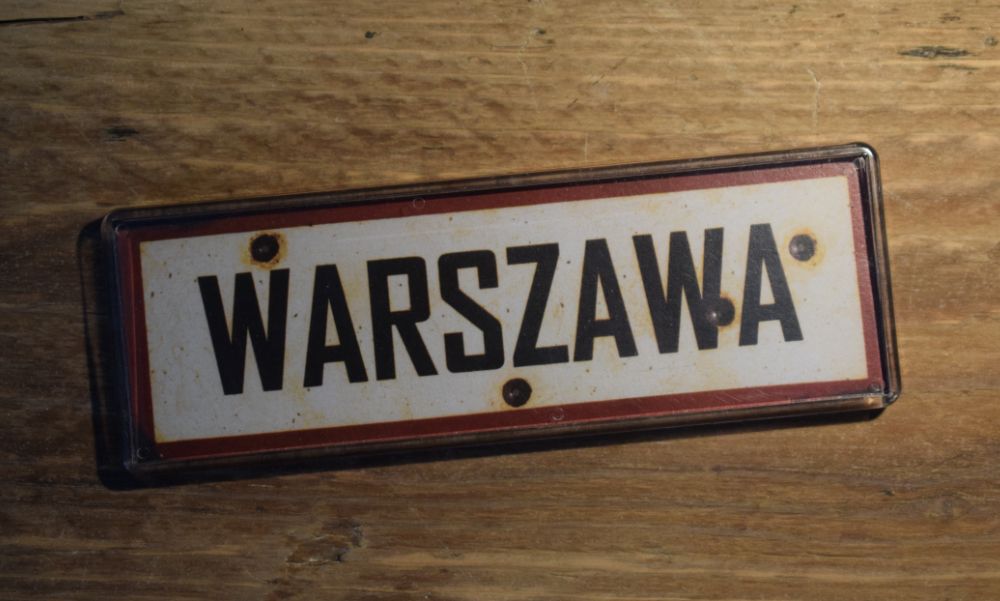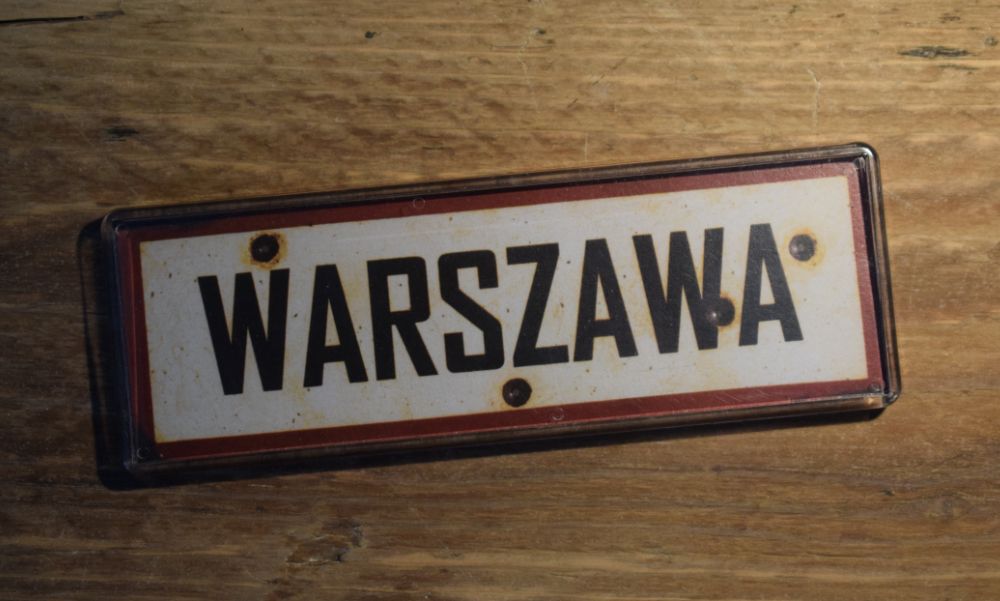
-
Warszawa Fridge Magnet
- 147mm x 50mm Fridge Magnet
- £2.99

Warszawa. 147mm x 50mm Fridge Magnet
Following the German invasion of Poland on September 1, 1939, Warsaw suffered heavy air attacks and artillery bombardment. German troops entered Warsaw on September 29, shortly after its surrender. Less than a week later, German officials ordered the establishment of a Jewish council (Judenrat) under the leadership of a Jewish engineer named Adam Czerniaków. As chairman of the Jewish council, Czerniaków had to administer the soon-to-be established ghetto and to implement German orders.
On November 23, 1939, German civilian occupation authorities required Warsaw's Jews to identify themselves by wearing white armbands with a blue Star of David. View This Term in the Glossary The German authorities closed Jewish schools, confiscated Jewish-owned property, and conscripted Jewish men into forced labor and dissolved prewar Jewish organizations.
On October 12, 1940, the Germans decreed the establishment of a ghetto in Warsaw. The decree required all Jewish residents of Warsaw to move into a designated area, which German authorities sealed off from the rest of the city in November 1940. The ghetto was enclosed by a wall that was over 10 feet high, topped with barbed wire, and closely guarded to prevent movement between the ghetto and the rest of Warsaw. The population of the ghetto, increased by Jews compelled to move in from nearby towns, was estimated to be over 400,000 Jews. German authorities forced ghetto residents to live in an area of 1.3 square miles, with an average of 7.2 persons per room. For months after the liquidation of the Warsaw ghetto, individual Jews continued to hide themselves in the ruins and, on occasion, attacked German police officials on patrol. Perhaps as many as 20,000 Warsaw Jews continued to live in hiding on the so-called Aryan side of Warsaw after the liquidation of the ghetto.
On April 19, 1943, a new SS and police force appeared outside the ghetto walls, intending to liquidate the ghetto and deport the remaining inhabitants to the forced labor camps in Lublin district. The ghetto inhabitants offered organized resistance in the first days of the operation, inflicting casualties on the well-armed and equipped SS and police units. They continued to resist deportation as individuals or in small groups for four weeks before the Germans ended the operation on May 16. The SS and police deported approximately 42,000 Warsaw ghetto survivors captured during the uprising to the forced-labor camps at Poniatowa and Trawniki and to the Lublin/Majdanek concentration camp. At least 7,000 Jews died fighting or in hiding in the ghetto, while the SS and police sent another 7,000 to the Treblinka killing center.
From July 22 until September 12, 1942, German SS and police units, assisted by auxiliaries, carried out mass deportations from the Warsaw ghetto to the Treblinka killing center. During this period, the Germans deported about 265,000 Jews from Warsaw to Treblinka; they killed approximately 35,000 Jews inside the ghetto during the operation.
In January 1943, SS and police units returned to Warsaw, this time with the intent of deporting thousands of the remaining approximately 70,000-80,000 Jews in the ghetto to forced-labor camps for Jews in Lublin District of the Government General. This time, however, many of the Jews, understandably believing that the SS and police would deport them to the Treblinka killing center, resisted deportation, some of them using small arms smuggled into the ghetto. After seizing approximately 5,000 Jews, the SS and police units halted the operation and withdrew.
On August 1, 1944, the Polish Home Army (Armia Krajowa; AK), a non-Communist underground resistance army with units stationed throughout German-occupied Poland, rose against the German occupation authorities in an effort to liberate Warsaw. The impetus for the uprising was the appearance of Soviet forces along the east bank of the Vistula River. The Soviets failed to intervene; the Germans eventually crushed the revolt and razed the center of the city to the ground in October 1944. Though they treated captured Home Army combatants as prisoners of war, the Germans sent thousands of captured Polish civilians to concentration camps in the Reich. 166,000 people lost their lives in the uprising, including perhaps as many as 17,000 Polish Jews who had either fought with the AK or had been discovered in hiding.
When Soviet troops resumed their offensive on January 17, 1945, they liberated a devastated Warsaw. According to Polish data, only about 174,000 people were left in the city, less than six per cent of the prewar population. Approximately 11,500 of the survivors were Jews.
